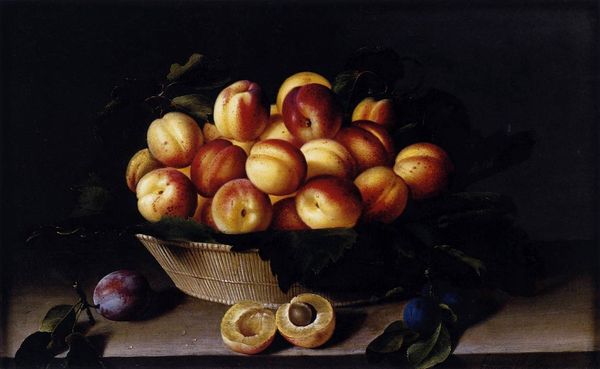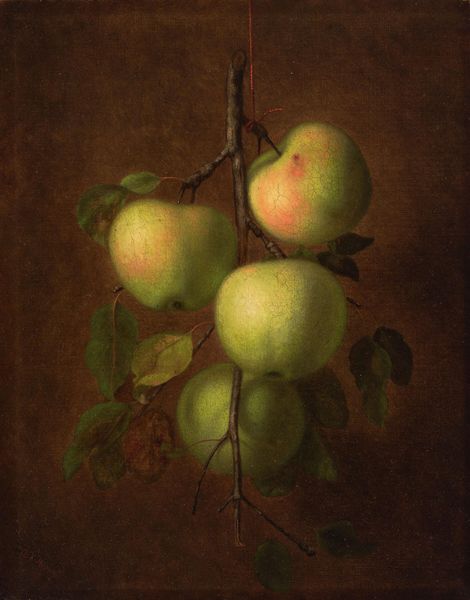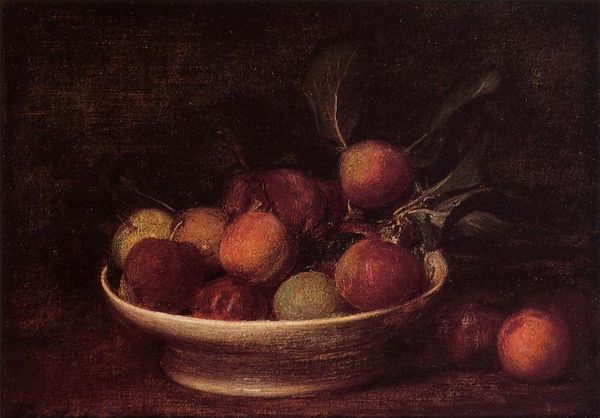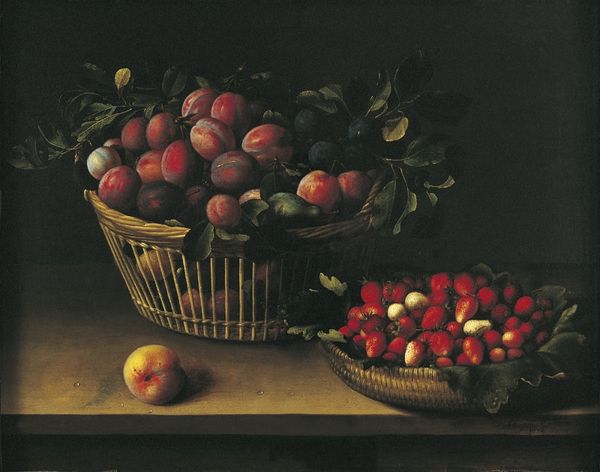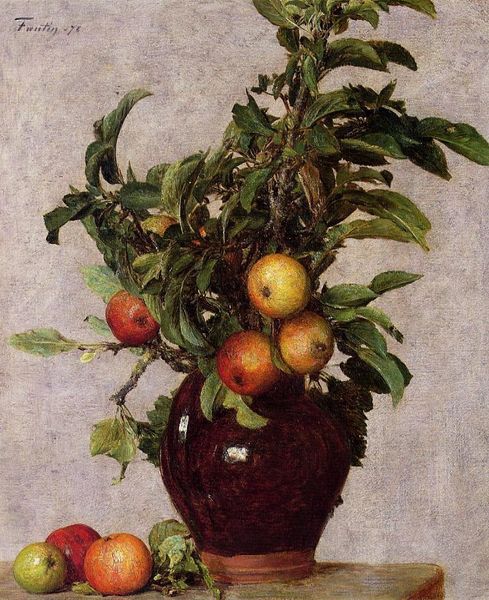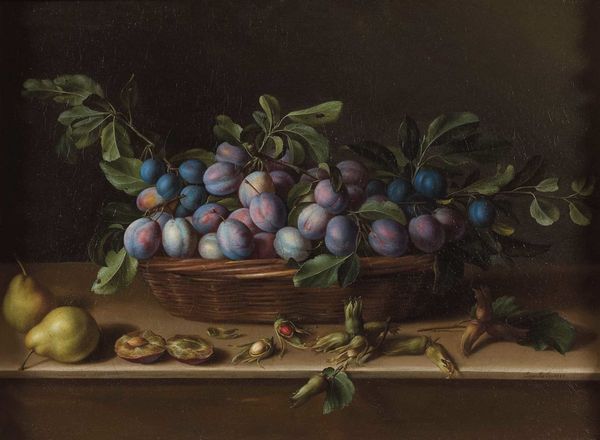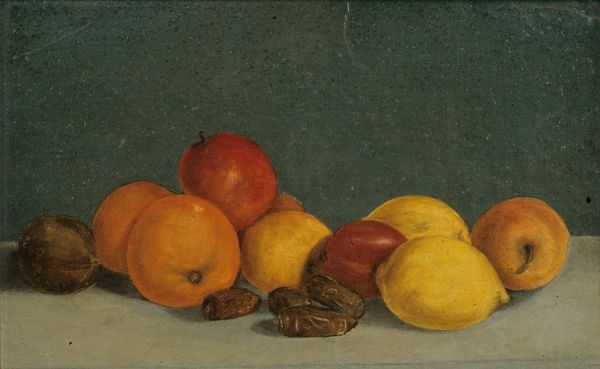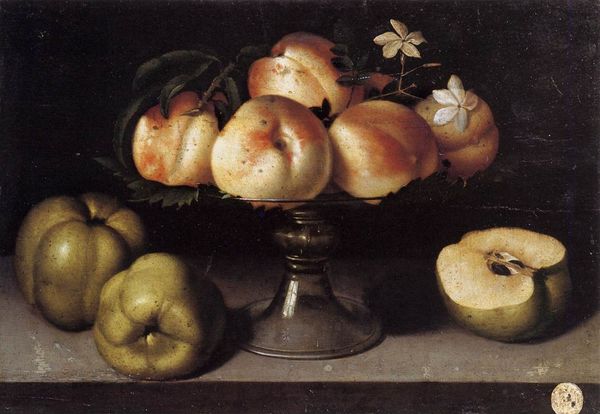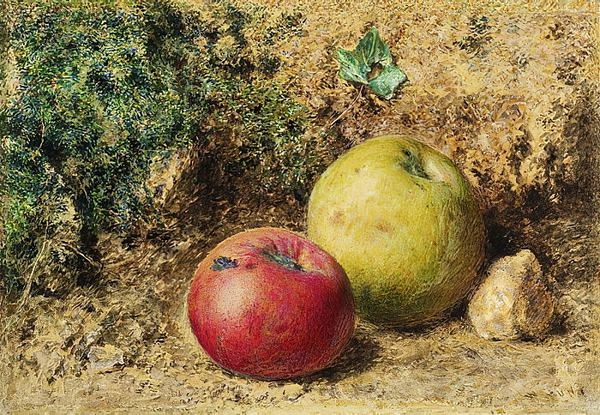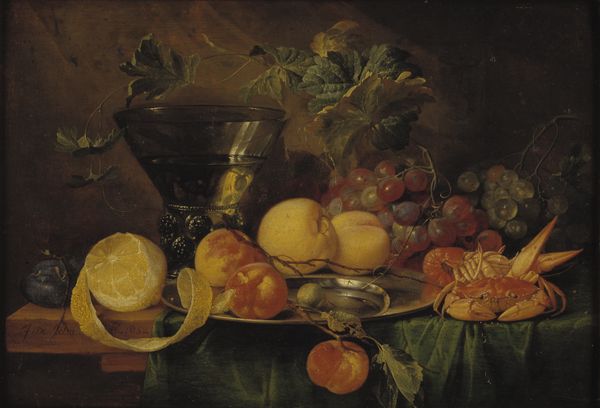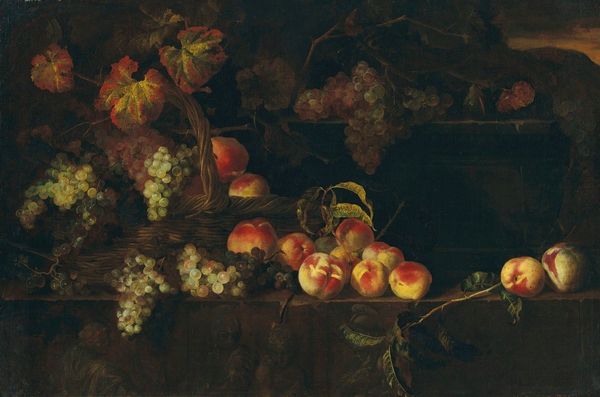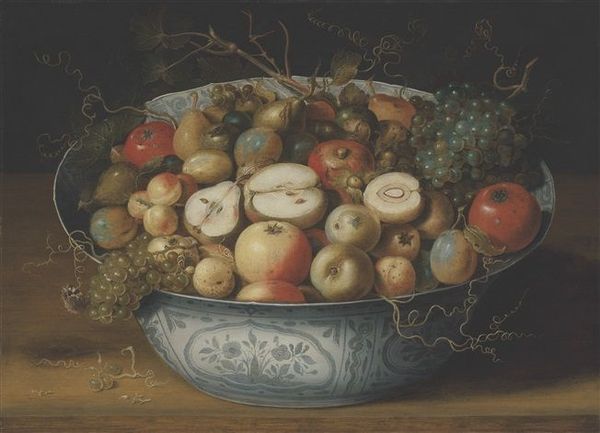
Copyright: Public Domain: Artvee
Editor: So, here we have "Autumn; Apples and convolvulus," painted by Edward John Poynter in 1880, apparently with oil paint and watercolor. The apples have such a fresh look, the composition feels like a snippet of nature caught at a perfect moment. What symbols do you see within this artwork? Curator: That freshness you sense is carefully constructed. Apples, historically, carry the weight of knowledge and temptation, from the Garden of Eden to classical mythology with the Hesperides. Do you notice how they’re presented alongside the convolvulus? Editor: I do, they look delicate but determined in how they vine. Are you implying they have significance too? Curator: Precisely! The convolvulus, often known as morning glory, is fascinating. It twines and climbs, often seen as a symbol of affection, but it can also represent the fleeting nature of time, of glory that fades. Given that apples are linked with autumn, it feels as if the artist is drawing a parallel between the natural cycle and something deeper. Editor: So the blossoming white morning glory isn’t necessarily celebrating affection. Curator: Perhaps it speaks more of a bittersweet recognition of beauty and its ephemerality. The muted palette, combined with these symbols, makes me consider our fleeting experiences. Don't you feel a twinge of that impermanence yourself? Editor: That’s not where I was initially! It's surprising how much symbolism can be woven into a simple still life. The combination does lend the image more gravity than I first assumed. Curator: Exactly. These images accrue power and multiple associations, even across centuries, and we reinterpret them as a new audience. Editor: I'll definitely look at still lifes differently now, and I learned that not everything is as simple as it appears. Thanks!
Comments
No comments
Be the first to comment and join the conversation on the ultimate creative platform.

